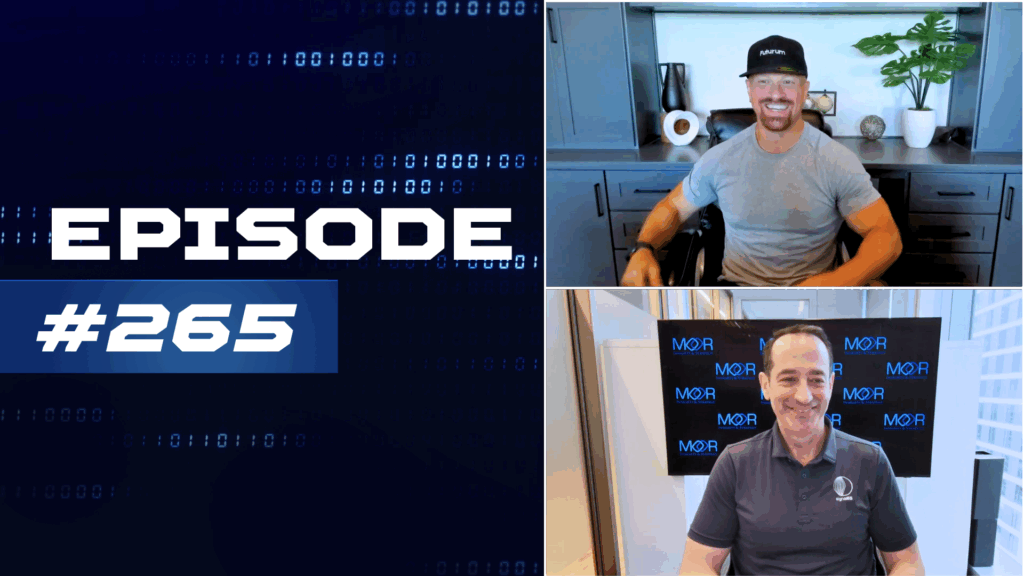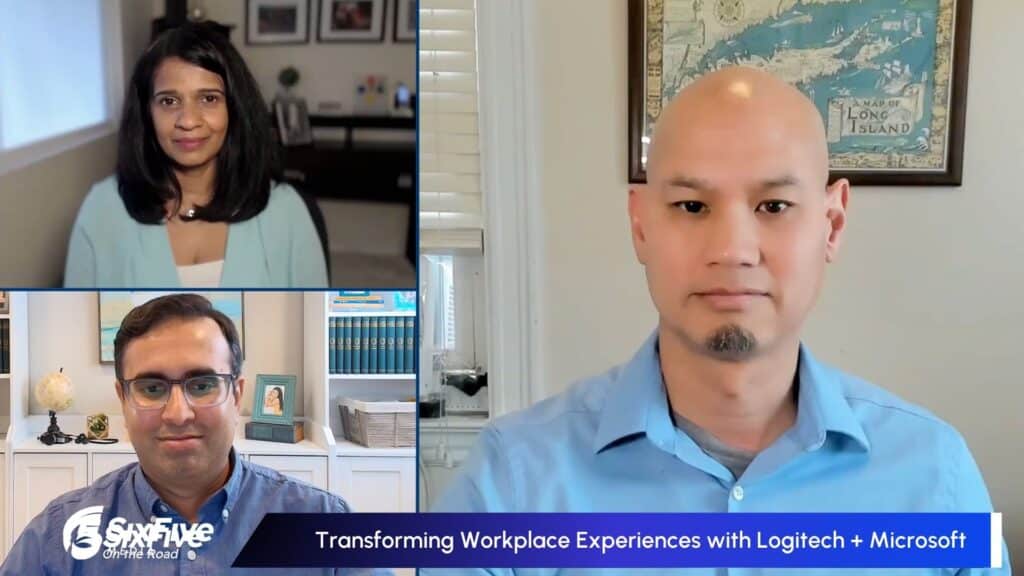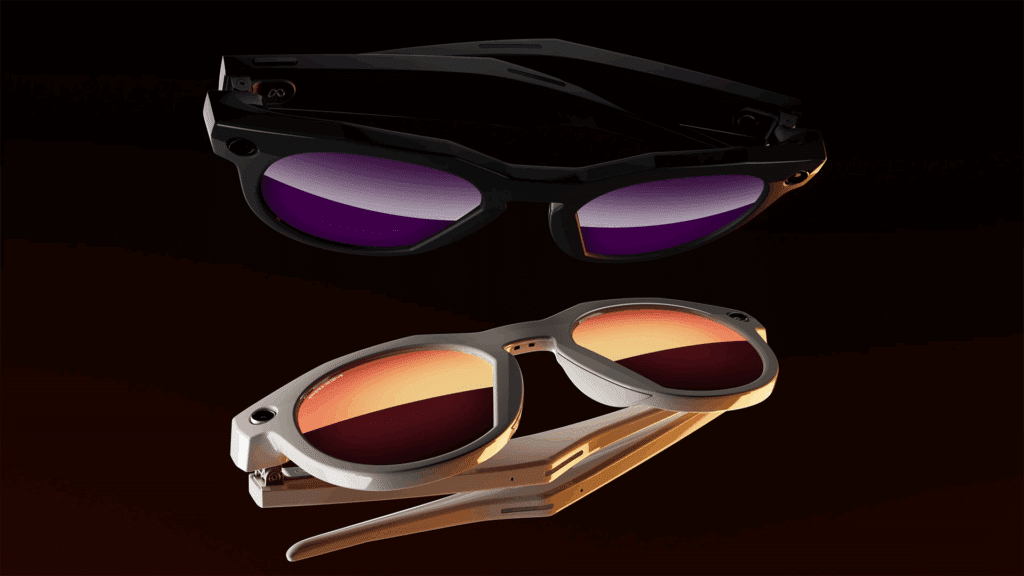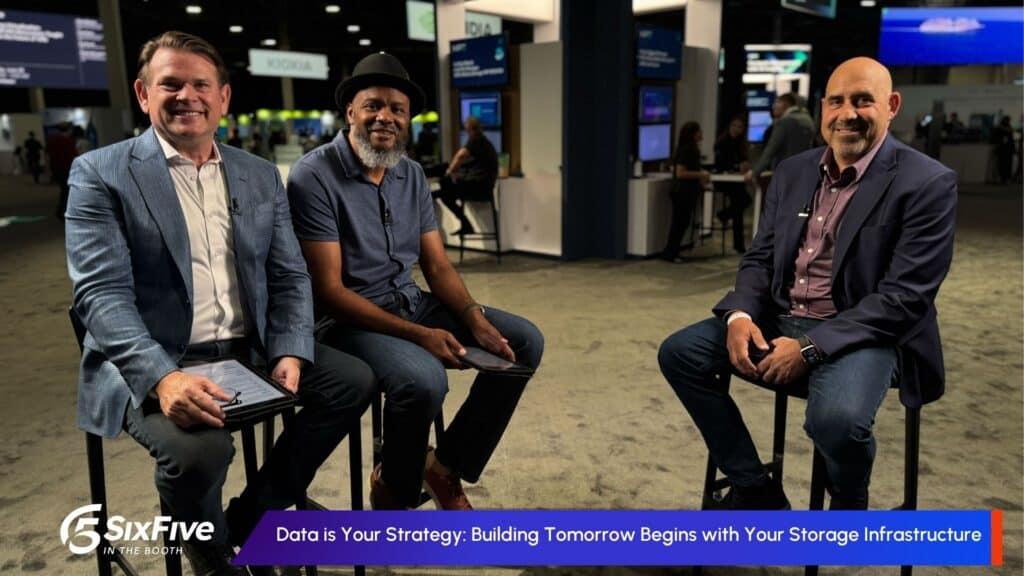Tune in for a replay of The Six Five Summit’s Automotive Spotlight Keynote with Nakul Duggal, Senior Vice President & General Manager, Automotive, Qualcomm. In this session, Nakul provides his unique perspectives on the key trends shaping the auto industry, and how companies like Qualcomm are helping automakers, OEMs, and Tier 1 suppliers adapt to an ever-evolving ecosystem. He will also share insights on how the company has taken its expertise in 5G, AI, and other advanced technologies and extended them to automotive to help make vehicles smarter, more connected, and safer, unlocking new opportunities for innovation across the ecosystem.
You can watch the session here:
You can listen to the session here:
With 12 tracks and over 70 pre-recorded video sessions, The Six Five Summit showcases an exciting lineup of leading technology experts whose insights will help prepare you for what’s now and what’s next in digital transformation as you continue to scale and pivot for the future. You will hear cutting edge insights on business agility, technology-powered transformation, thoughts on strategies to ensure business continuity and resilience, along with what’s ahead for the future of the workplace.
Click here to find out more about The Six Five Summit.
Register here to watch all The Six Five Summit sessions.
Disclaimer: The Six Five Webcast is for information and entertainment purposes only. Over the course of this webcast, we may talk about companies that are publicly traded and we may even reference that fact and their equity share price, but please do not take anything that we say as a recommendation about what you should do with your investment dollars. We are not investment advisors and we do not ask that you treat us as such.
Transcript:
Patrick Moorhead: Nakul, thank you so much for joining us at The Six Five Summit 2022 and the inaugural year of Automotive Technology.
Nakul Duggal: Pleasure to see you Patrick, and thank you for having me.
Patrick Moorhead: I know it gets more fun each year and quite frankly, success is fun. And in your recent April earnings, Automotive now has a 16 billion dollar backlog. So first of all, congratulations.
Nakul Duggal: Thank you.
Patrick Moorhead: Maybe we can start off by talking just first of all, really quick. What do you do for Qualcomm? I know the title’s up there, but what’s your day to day?
Nakul Duggal: I run the automotive business. I’m the Senior Vice President General Manager for Automotive. I’ve been at Qualcomm since 1995. So really long time. And I have been doing automotive for 11 years now. So 2011 is when I have started and yeah, it’s been quite a journey.
Patrick Moorhead: Yeah. Quite a journey. I mean, gosh, even four years ago, some people didn’t even know Qualcomm was in that business, even though you’ve been in that business for so long. But let’s get down to the meat here. And let’s talk a little bit of industry right now. So cars are changing quickly. We can see it around us, whether it’s electrification, whether it’s automation, whether it’s content, things like this. What are some of the key trends driving this industry right now? You talk day to day with these senior leaders of these car companies.
Nakul Duggal: It is a very unusual time for an industry that is the size that Automotive is because transformation doesn’t begin to describe what is actually going on. I think it’s massive disruption. And I think if you think about everything that is changing, electrification as an example changes everything. Changes everything from raw materials to charging stations to infrastructure that you rely on. And then of course the core need of an automaker to be able to build factories that produce a very different product than what they’ve optimized for the last 35, 40 years. That is highly disruptive to every element of a supply chain.
If you think about the digitalization of a vehicle or the transformation of a vehicle as it starts to become much more software and semiconductor centric, where it really starts off is do you have the in-house expertise to build a product that over the long run is going to be differentiated not just on the physicality of the product, but the experience that you have to go create. It’s driving behavior. It’s behavior in terms of the experience you create inside the cabin.
And again, you asked the question, where is the expertise coming from? Where is the experience coming from? How do you go build a product like this that will compete, say with companies that have come from that heritage. And then underlying all of this is really the very traditional supply chain that Automotive is well known for. The tier threes and the tier twos and the tier ones. The semiconductor crisis has made it very apparent as to how much of a dependency there is on this very high complex supply chain. So you start to put all of this together and automakers come in all types of shapes and sizes and have a lot of different complexity around them, a lot of history.
And it really is about how do you set a not star for your company as a leader at an automotive company and figure out how are you going to emerge out of all this complexity that you’re dealing with and come up with a plan within a reasonable period of time, that allows you to have a brand new product that will be very relevant to your consumers. And then where we fit in is, who are the partners that you can rely on that are going to be able to help you make that transition and that are going to be with you because this is a fairly tumultuous time, lot of risk, lot of complexity, lot of leaping before you look and that’s what we are in the middle of. So, it is actually getting even more interesting, even more fun than it has been over the last 10 years.
Patrick Moorhead: So you talked a little bit about it, but to be pointed here, how has the industry itself changed to align with some of these trends? If it’s not supply chain challenges or the requirement to apply even deeper technology, I mean, I’m seeing different kinds of structures of relationships changing.
Nakul Duggal: I think, maybe let’s start off with the semiconductor aspect of the question. As the automotive ecosystem went through the crisis, it became very clear that different types of semi providers had a varying degree of ability to influence their downstream supply chains in terms of getting capacity, reserving capacity, fulfilling the need, providing transparency. So automakers have definitely focused on securing various aspects of their supply chain, investing directly in foundry capacity, getting specific contracts in place. And for the very first time, what that is done is it has allowed automakers to really understand, first of all, what it means to be in the semiconductor business. And then separating the complexity from partnerships. Who are the players? What makes one better than the other? For us, we are very privileged in that we have such a massive diverse business in the semiconductor space.
It allows us to be able to get a lot of economies of scale. We get ahead of the queue compared to some of the others, just because of the scale at which we operate. And these are things that are now known to automakers. This wasn’t a conversation that you could have had even six months ago. The second aspect that this then brings up is, if you’re going to build something that is highly complex for the future, you really are getting vetted to that partner because these are no longer conversations that are single generational conversations. So that means it is a direct contract between Qualcomm and that automaker. And that comes with a variety of different types of other conversations. Are you obligated directly to the automaker or is there tier one in the middle? If it’s the tier one, what is the split in the role?
How do you align on pricing? How do you align on roll splits? How do you align on supply assurances warranty? So we are really, frankly seeing a complete change in landscape in terms of supply chain responsibilities. That is what we are right in the middle of right now. And I think what it starts to actually bring up is the question of what is your differentiation point, what as a supplier, as a company, as what it is that you get up in the morning and focus on, what is it that you’re differentiating on? Where are you investing and why will that be relevant in the next five or 10 years? So a lot of the moves that we have made over the last two years or so, are all aligned around watching this space play out. And then of course taking action.
Patrick Moorhead: One of the misnomers in the industry about five or six years ago was this notion that “All I had to do was electrify my car and I have a next generation car”. It’s like, “Hey, this is what these car makers were doing. And I changed my combustion engine for electric and I’m going to be good”. Well, the reality is I think what many pundits and even some car makers and tier ones missed, is that was only part of the problem. And I think we’re all in agreement now is that we’re moving more towards this notion of a software defined vehicle. And I’m curious, how do you think about this Nakul, in your role?
Nakul Duggal: See, I think if you think about an electric vehicle, it simplifies just in terms of the share number of components used as compared to a combustion engine. But what it really does is it basically is a bit of batteries, it’s an electric power train and everything else is really the shell on top of which you now have to create the human experience. And that wasn’t an opportunity that automakers had because they were dealing with a tremendous amount of legacy, complexity, skills, how products had evolved. So in some sense, it allows you to wipe the slate clean, think about this from a couple of different vantage points. What is the product going to be used for? What is the usable life of the product? How do you create value from the product over that usable life? And that brings up a very different set of questions.
One of it that we are dealing with right now is abstract the software from the hardware. So build hardware that is going to be relevant for a very long period of time, created in an architecture where the hardware doesn’t define the usable life of the platform.
So if the hardware is obsolete, have a way to replace it. And then when you are designing software, design it such that you are able to separate the function from the underlying hardware and low level software is running on.
So this is how you really design any modern day data center architecture, any modern day software architecture. And that’s exactly what automotive is going through, really across the board. And then it brings up a lot of questions as to what is the definition of what a domain traditionally used to be, but versus what a domain is in the future.
Patrick Moorhead: Yeah, it is incredible, this notion. And I think, quite frankly, smartphones made it popular. Although I think architecturally, a data center is probably a better example, but as consumers, we’re just all used to just, we have a software upgrade, we have an application upgrade and we’re off. But you have certain hyper scaler data centers that are keeping the hardware the same and getting 10 years of usable life by revving the software. So I think I’d say it is a great example.
One of the biggest software challenges though, out there, is autonomy. And it’s funny, 11 years ago when I started my business, there was this notion that, teeny tiny compute processors would be able to do full automation. And there were some claims made even in the industry by really smart people that haven’t even been envisioned yet. So we’re all around the map. And, Nakul, how do you envision this transition from where we are today, which is most of the cars on the road aren’t even maybe have a little L1 in them and some of those popularized cars and getting into L2 and L2 plus, how do you envision this transition to autonomy?
Nakul Duggal: This one has been a very interesting journey for us because, as technologists, as engineers, it’s clearly a fascinating problem statement that is you have to really spend a lot of time thinking about how complex it is to then figure out how long it will really take and how many phases it has. We have been working on autonomy for over eight years, but what was the turning point for us was when we decided that Automotive was going to be significant enough as an opportunity for Qualcomm, we realized that we did not have all of the assets, all of the expertise inside the company. We could build chips, but building chips without actually understanding what the workloads are, where the market is going to go, how [inaudible] will evolve, how sensors will evolve, didn’t really make sense as a strategy.
So we took the approach where we suddenly could build chips and we kicked off a roadmap, but we had to get into the stack business. And a couple of years ago, we decided that computer vision was going to be a very important element.
Safety was going to be a very important expertise, but most importantly, we would have to have a team that had a lot of familiarity with working in the automotive ecosystem in terms of what it takes to deliver automotive grade software. So we finalized on Vioneer and Arriver, which was the software team within Vioneer, as the partner that we would focus on. And a couple of years later, we now have acquired them. We are integrating the team and it has done a few very interesting things. In the eyes of our customers, we are building chips for 8S all the way from entry to super premium tiers.
The chips that we build are mixed criticality chips, which basically means you can run a variety of different workloads. You don’t have to separate between 8S and cockpit and infotainment. You can essentially scale up software to the point about abstracting software from hardware. We are building chips with very different architectures. These are chips that are really very much for automotive purposes. Then we are investing heavily in catching up on computer vision and all of the area that has to go around computer vision, because there is a massive opportunity there. And customers want us to be able to go create alternatives in the market.
And then finally on drive policy and really the turnkey solution, that is something that we are doing as a combination of our own assets and we announced a partnership with BMW. So we are joining forces with the market leader there to deploy something on the road by 2025. And we have rights to all of these products that we are building to scale up to the ecosystem. So it’s really a very comprehensive strategy that builds on top of our telematics leadership, our cockpit leadership and then we start to go build an 8S and 80 SoC platforms, computer vision drive policy, and the time solution.
Patrick Moorhead: I can’t tell you how surprised I was when I think it was maybe three, maybe four years ago, I was invited to drive in a car powered by Qualcomm. And my first reaction was, is I didn’t know Qualcomm was doing this and it was very stealthy. And I think you and I met in a conference room in Las Vegas, and then I went and took a drive and I was pretty much blown away because I had no idea you were working on this and congratulations on going. I know you said you’d been working on this for eight years, but going from something like that to having these big names out there, is impressive. And in 2022 alone, holistically you’ve had some big announcements with Stellantis, that was a couple weeks, a couple months ago, BMW, Ferrari, Volvo, Renault, Honda, just to name a few. And I’m curious, it gets me to the question, what is your role in the industry? And sometimes I get that question, which is, “Hey, what is Qualcomm trying to be here? Are they this? Are they that”? What is your role in the industry?
Nakul Duggal: I think we are continuously redefining that role because we are, as you just mentioned only in the last two years or so, we have done things that would’ve been considered unusual. So look, the market is evolving. The car as a mobility platform is evolving. It is a canvas that still has to… There are many different things to paint on it. We came up with the moniker, the digital chassis, which is what we are building and for us, what the digital chassis is, is really an amalgamation of all of the various products that we bring to the table. We have a rich connectivity portfolio that has a lot of history, that has very strong leadership position, that really has everything in it from power line communication chips for EVs to GPS chips for location, Wifi, Bluetooth, Bluetooth low energy. And of course, 5G modems and application processors.
We have built a very comprehensive portfolio around infotainment, cockpit cluster, driver monitoring, rare seat entertainment, passenger vehicle screens, and all the software and content ecosystem then goes around that. And then now we are getting into the 8S and automated driving space. And then we have a Car-to-Cloud services platform that connects all of this together. So who we are trying to be? The problem statement is highly complex. It is evolving. It is changing. And frankly, there is a lot of opportunity to monetize every aspect that we’re getting into. So it really is becoming a partner to automakers, working for them, working with them, to provide these capabilities and being very flexible because we know that every automaker is at a different point in time than their evolution. It is a complex evolution. It requires a lot of different considerations before a new architecture can be contemplated at an automaker. So we have the ability to be very flexible in terms of offering what is required. And we are able to flex and scale as needed.
Patrick Moorhead: The conditions for success in this market have dramatically shifted over the past 10 years. You have new players that are emerging in areas that I think many of us would’ve had a hard time figuring out. But whatever your model is, it’s working. And when I talk to your customers, one thing that they’ll always iterate is, is this notion of a partnership and listen, everybody talks partnership. I get it. It’s always in the press releases, but when you get somebody aside and pull them aside, that’s the feedback that I’m getting.
Nakul Duggal: I think it’s more important than just the word because none of these programs are simple programs. None of them. And there is given the situation with the semiconductor crisis, given the complexity of the supply chain, given that the cost of not delivering or not being on time is millions and millions of dollars for automakers. And it’s a very competitive space. We are privileged to be in the position that we are in. So you do have to live up to what it means to be a partner. I think the other piece is this is a little bit in Qualcomm’s heritage in that the smartphone business has taught us how to be an at scale provider of a very complex product that goes into a very complex ecosystem, that has to work. It has to be on time. If it doesn’t work, you get feedback right away from consumers.
So there is a DNA in the company that understands the meaning of what it means to go deliver to your customers and partners.
Patrick Moorhead: It is really interesting to see the similarities between the smartphone market and the automotive market. First time I heard it, I did a double take and then I started really peeling it apart on what it looks like. You have software stacks, you have scale, you have socket compatibility and importance. Even down to security, those things matter. When you’re at scale, things like security are just better and easier, because you can afford to do that as opposed to some other areas where you may not be able afford to do that. So I have one final question for you, and this is most important that if you need anybody to test out one of the Ferraris, I’m your guy. Okay. And I’ll give you a report back. We’ll do this through the reviews program and I’m just there to help you out, Nakul.
Nakul Duggal: You know I have you on my speed dial Patrick.
Patrick Moorhead: I appreciate this, Nakul. Thank you so much for spending time with me. So looking forward to hitting the next auto trade show or even CES, and we can sit down and chat. And again, congratulations on your success. I know you’re never satisfied at Qualcomm, but I do have to note when I’m seeing good stuff. So thanks again.
Nakul Duggal: Thank you very much. Thanks for having me.
Author Information
Daniel is the CEO of The Futurum Group. Living his life at the intersection of people and technology, Daniel works with the world’s largest technology brands exploring Digital Transformation and how it is influencing the enterprise.
From the leading edge of AI to global technology policy, Daniel makes the connections between business, people and tech that are required for companies to benefit most from their technology investments. Daniel is a top 5 globally ranked industry analyst and his ideas are regularly cited or shared in television appearances by CNBC, Bloomberg, Wall Street Journal and hundreds of other sites around the world.
A 7x Best-Selling Author including his most recent book “Human/Machine.” Daniel is also a Forbes and MarketWatch (Dow Jones) contributor.
An MBA and Former Graduate Adjunct Faculty, Daniel is an Austin Texas transplant after 40 years in Chicago. His speaking takes him around the world each year as he shares his vision of the role technology will play in our future.





